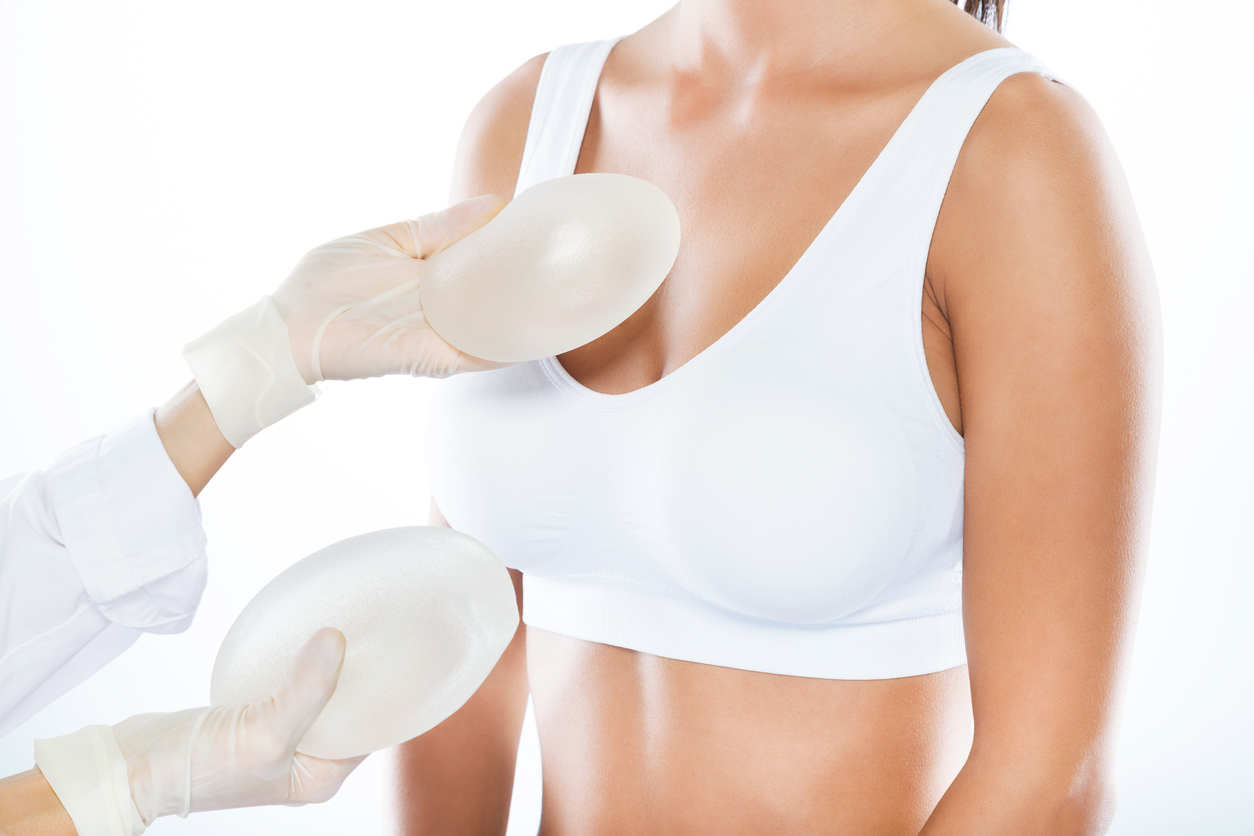Call Us Today
All About Breast Augmentation Surgery

March 12, 2019
In terms of the implant itself and the actual procedure, breast augmentation has come a long way since 1962. But with so many options on the table (quite literally) it can be easy to feel overwhelmed. Though you should always consult your surgeon and take his/her suggestions seriously, the decision is ultimately up to you.
Different Types of Breast Implants Explained
Saline Breast Implants
Saline breast implants are filled with sterilized saline water. Though it’s uncommon for them to break, it has happened on occasion. If the implant were to leak, it would collapse and your body would naturally absorb and discharge the water.
Silicone Breast Implants
Silicone breast implants are filled with silicone — a sterile gel material. Unlike saline implants, a leaking gel implant will not collapse. To ensure the implant is not leaking and sitting properly, you may have to visit your surgeon every few years for a check-up.
Smooth Breast Implants
As its name implies, smooth implants feel the softest. Because they can move freely within the implant pocket, they give breasts the appearance of natural movement.
Textured Breast Implants
Unlike smooth implants, textured breast implants stick to breast tissue. This helps the implant stay in place throughout the years, meaning you’ll never have to worry about them shifting or falling out of the pocket.
Can Implants Correct Asymmetrical Breasts?
It’s normal for a woman to have asymmetrical breasts. In fact, it’s very common, but that’s because the differences in shape and size are often so minimal they go unnoticed. However, there are times when women have breasts differing greatly in size. Naturally, this is often a source of concern for most women, as it can leave them feeling self-conscious.
If you have asymmetrical breasts and are considering making a change, you have several options and procedures to choose from, including:
Two Different Sized Implants
If you’re looking to increase the general size of your breasts and correct an asymmetry, two implants of varying sizes may be the right choice for you. During this procedure, we will place a small implant in your larger breast and a large implant in the smaller one. Once the procedure is done, both breasts will be larger than they previously were and a more similar size.
One Breast Implant
A common solution for breasts that are significantly different sizes is to place a single implant in the smaller breast so that it now matches the size and shape of the larger one.
A Single Breast Reduction
If you’re happy with the size of your smaller breast, we can reduce the size of the larger one until they both match. This is a great choice for women looking for a natural solution.
Will Breast Implants Change the Appearance of My Nipples?
The Difference Between Nipples and Areolas
First things first, it’s important to understand that when people say “nipple” they’re actually referring to the areola. The nipple is the center projection that protrudes from your areola, while the areola is the darkly pigmented skin in the center of your breast.
1. Will implants change the size of my nipples?
For the most part, no. Though implants can make your nipples appear fuller, they will not make your nipple longer or larger.
2. Can the shape of my areola be changed?
If you tell your surgeon in advance that you’d like to change the general shape of your areola, this can be accomplished during a breast reduction or implant surgery. Because it’s easier to remove sections of an areola, it’s more common to have areolas made smaller, rather than larger.
3. Can inverted or retracted nipples be corrected?
Whether for cosmetic or functional (such as breastfeeding) reasons, retracted nipples can be relatively easily corrected. They can often be corrected during a standard augmentation procedure or done as a separate procedure.
Will Implants Affect My Likelihood of Breast Cancer?
Implants and Breast Cancer Diagnosis Rates
Women have been altering the size of their breasts for decades, meaning we have a very good understanding of how breast implants affect a woman’s health — specifically, her likelihood of breast cancer.
We’re pleased to say that neither saline or silicone breast implants increase a woman’s likelihood of breast cancer. In fact, women with breast implants were actually found to have a slightly lesser chance of having breast cancer. However, it’s important to note that it’s likely not due to the implants themselves, but rather that women who choose to get implants are typically leaner.
Lifestyle Factors that Affect Breast Cancer Likelihood
Ultimately, women with and without breast implants have a very similar likelihood of developing breast cancer. Regardless of breast implants, your likelihood of getting breast cancer increases if:
- You have a family history of breast cancer.
- You have a genetic mutation, such as BRCA1 and BRCA2.
- You’re overweight and/or not active.
- You’re taking hormones.
- You drink alcohol often and in larger quantities.
- Breast Implants and Mammograms
The American Cancer Society suggests all women begin getting annual breast cancer screenings (mammograms) at age 40. Because it’s advised that women begin checking themselves for lumps well before their 40th birthday, doctors suggest women with implants pay special attention to how their new breasts look and feel.
Because breast implants can also affect how a mammogram technician photographs your breasts and how the images are examined, it’s important to tell your technician that you have implants before the mammogram begins.

Top NYC and Long Island Cosmetic Surgeon
635 Madison Ave, 4th Floor, NY NY 10022
118 Glen Cove Road, Roslyn Heights, NY 11577
Call 212-344-0496 for your free consultation!